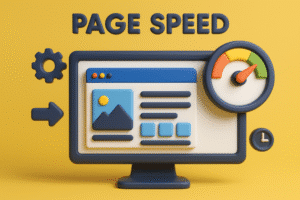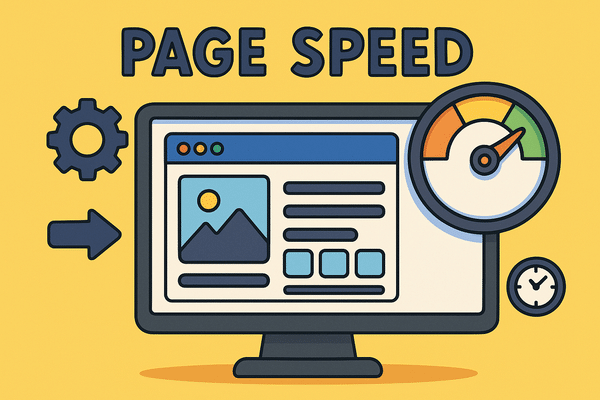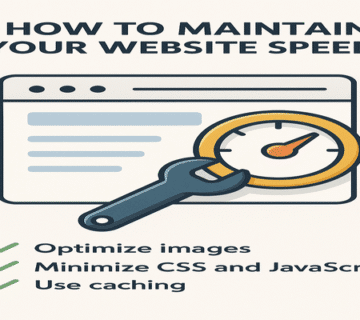Page Speed
Introduction
In today’s internet era, website loading speed is one of the most critical factors influencing both user experience and search engine rankings. Users seek websites that load quickly without delay, and search engines like Google take site speed into account when ranking pages.
This is where tools like PageSpeed Insights by Google come in — helping webmasters analyze and improve their website’s performance.
In this article, we’ll explore what Page Speed is, its importance, how to use PageSpeed Insights, and how to optimize website speed using the tool.

What is PageSpeed?
PageSpeed refers to the loading speed of web pages, i.e., how long it takes for a page to fully load on a user’s device. It is one of the key factors that affect both user experience and SEO performance.
To help measure and analyze website speed, Google provides PageSpeed Insights, a free tool that offers detailed reports on how to improve page loading time using recommended practices and technologies.
The Importance of PageSpeed for SEO
1. Direct Impact on Search Rankings
Since 2010, Google has considered page speed a ranking factor. Websites with fast loading times tend to rank higher in search results than slower sites.
2. Enhances User Experience
Fast-loading websites offer better usability. When users can quickly access content, they are more likely to stay, explore, and engage with the website.
3. Reduces Bounce Rate
Slow-loading sites typically suffer from high bounce rates, as visitors may leave before the content loads. By improving load time, bounce rates decrease and engagement increases.
4. Optimizes Mobile Performance
With the growing use of smartphones, optimizing website speed on mobile devices is essential. Google prioritizes mobile-friendly and fast-loading sites in its rankings.
How to Use PageSpeed Insights
1. Visit PageSpeed Insights
Go to the official tool at: PageSpeed Insights
2. Enter the Website URL
On the homepage, paste the URL of the page you want to analyze into the search box.
3. Analyze the Results
Click the “Analyze” button. The tool will evaluate your site’s speed and performance, then generate a score from 0 to 100 along with detailed insights.
4. Review the PageSpeed Report
The report is split into mobile and desktop performance results, showing metrics like First Contentful Paint, Time to Interactive, and more — along with suggestions for improvement.
5. Apply Recommendations
Based on the suggestions, webmasters can optimize elements like image sizes, enable caching, reduce server response time, and minimize code to enhance site speed.

How to Improve Website Speed with PageSpeed Insights
1. Optimize Image Sizes
Large images are a common cause of slow page loads. Use tools to compress images or switch to modern formats like WebP, which provide high quality at smaller sizes. Always use appropriate dimensions and resolution.
2. Enable Caching
Caching stores certain website data on the user’s browser so it doesn’t need to be reloaded with every visit. Use browser caching or a Content Delivery Network (CDN) to reduce load times.
3. Reduce HTTP Requests
The more files a browser has to load (e.g., CSS, JavaScript, images), the slower the page. Combine files and minimize external dependencies where possible.
4. Minify JavaScript and CSS Files
Use minification to reduce the size of JS and CSS files. This removes unnecessary characters and spaces, helping speed up page rendering.
5. Improve Server Response Time
A slow server can significantly delay page loads. Enhance server performance by upgrading hosting or utilizing a CDN for global delivery.
6. Prioritize Critical Content
Ensure that essential page elements (like text and key visuals) load first. Load less important scripts and resources later to improve perceived performance.
Conclusion
Website speed is a crucial factor in delivering a smooth user experience and improving your site’s visibility in search engines. With PageSpeed Insights, website owners can analyze page performance and apply actionable improvements.
By optimizing images, reducing file sizes, leveraging caching, and refining server response, you can greatly enhance your website’s speed. This leads to better engagement, lower bounce rates, and higher search engine rankings.




حبّيت الطرح! ده النوع من المواضيع اللي فعلاً بيرفع مستوى المواقع وبيخليها تنافس بقوة في نتائج البحث.
طرح ممتاز! أدوات SEO هي البوصلة اللي بتوجه كل جهودك نحو النجاح في عالم الإنترنت.
Such a valuable subject! SEO tools are the backbone of any smart digital marketing strategy.